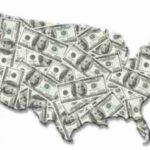I sometimes get asked about the science of pricing. For example, I get asked, “Is it really better to price something at $59.99 or $60.00”? I have always been pretty obsessed with the psychology of pricing. Today I’d like to share a bit of history that has influenced how consumers respond to different prices.
After our nation won its independence from England, the country was in desperate need of some form of national revenue to pay off its debts. The government determined that a great deal of this income could come from tariffs on imports. So in 1790, the Secretary of the Treasury, Alexander Hamilton, created the Revenue-Marine and commissioned several revenue cutters to collect and enforce the tariffs on imported goods. Today we know that branch of government as the US Coast Guard.
Generally, consumer goods were priced in round dollars. However, if the goods were imported from foreign countries, such as England, the product has assessed a duty that changed the ultimate price of the product to a price that no longer ended in a nice round number. Since domestically produced products were often inferior in quality to imported goods, consumers associated quality items of the time with those that were imported from England. So, when a consumer saw a price tag where the price was not a round number they were left with the impression that the product came from England which was associated with good quality items.
Moreover, the price tag of an item has a powerful way of conveying a message to a consumer. A price tag with a round value conveys an imprecise association between the price and the value of the product or service, conveying that the price is open for negotiation? Said another way, a person is less likely to try to negotiate on price when you have a precise list price. Therefore, it is better to price an offer at $2,524 than $2,500, because when a buyer sees a price that is more precise they think it was the result of some rather detailed computation. As a result of that perceived computation, the consumer feels there is less fat/margin in the price and is less likely to challenge the price. I would argue that the same is true when it comes to meeting times or for how long an offer may last. Being specific with the offer such as it ends at 3:45 Tuesday or 13 days from now is unusual and will more likely be remembered because it is more specific in nature.
Finally, have you ever wondered why a business might price an item at 9.99 rather than just $10? Here’s the psychology, proven by endless research. Being lazy, many consumers tend to compare two prices starting with the left-most digits. If they are different, many consumers just stop the comparison. Not only is 10 a 2 digit number where 9 is only one digit, 9 is less than 10 and looks cheaper by a dollar to the lazy consumer. So why $.99 you ask? Studies have shown that consumers are most likely to ignore right-hand digits behind the decimal point. As retailers, why wouldn’t you want to charge the highest “right hand” price? This is why we see .99 so frequently, and why you should consider using it.
Do you price your product or service based on buyer psychology?












